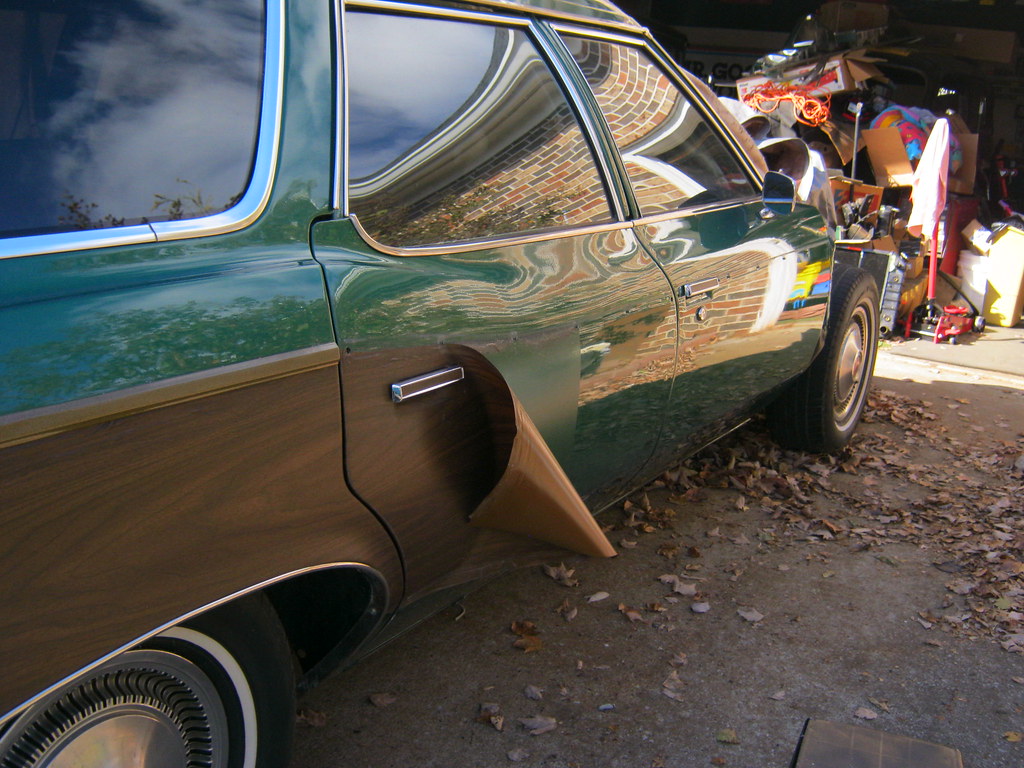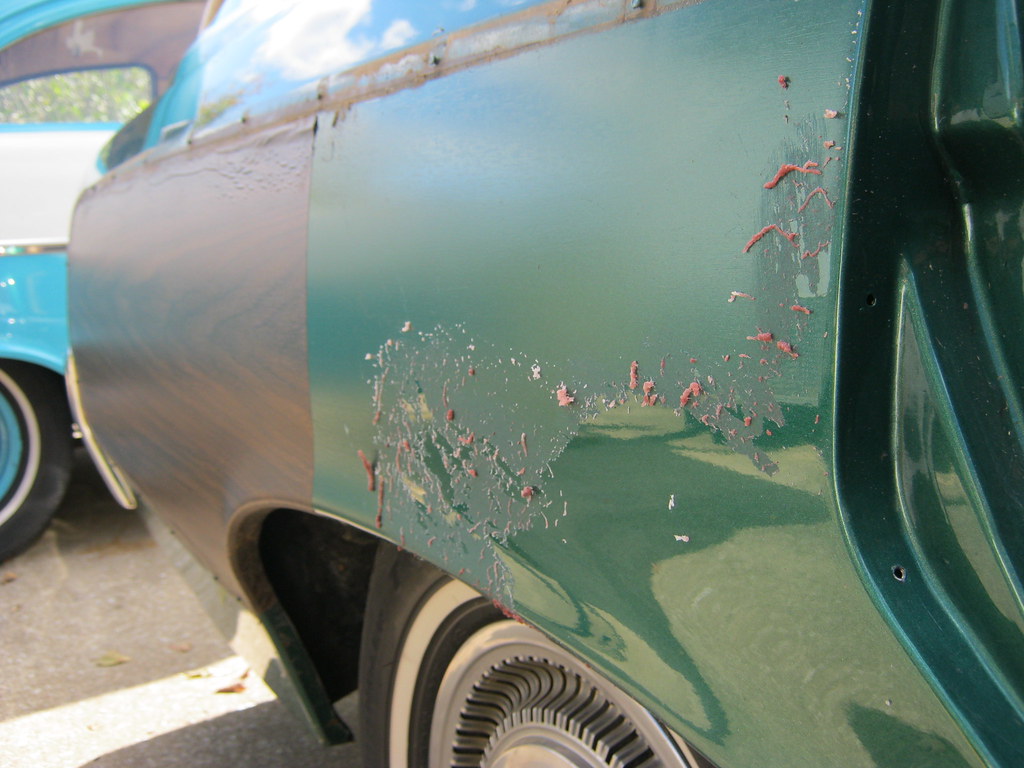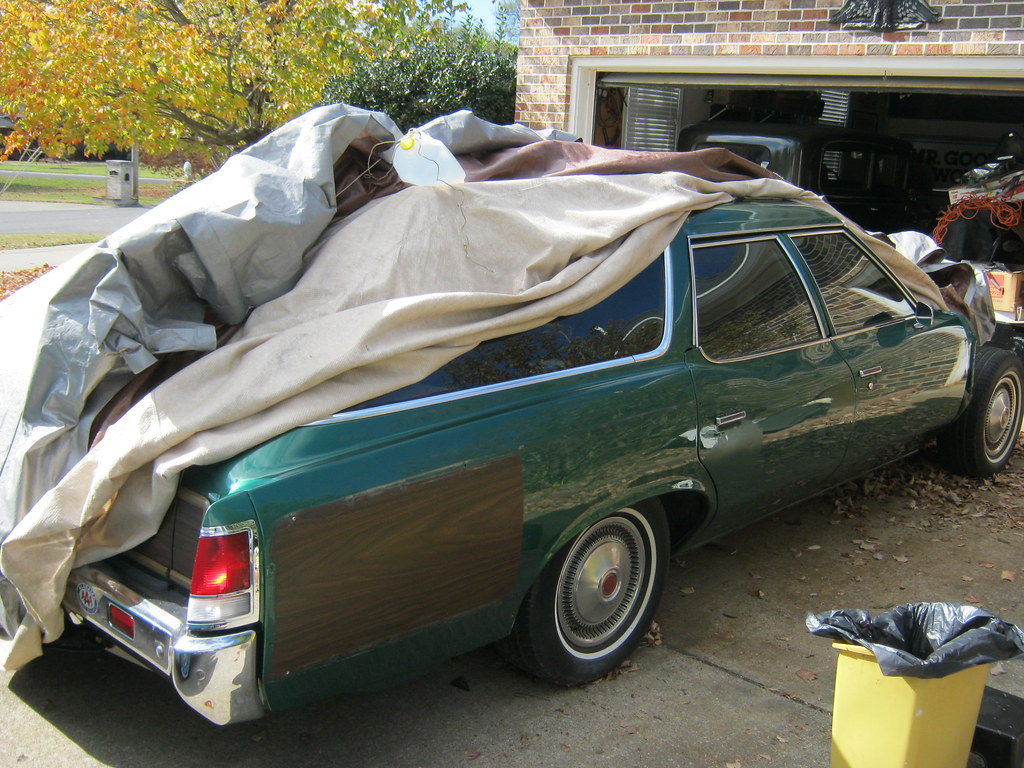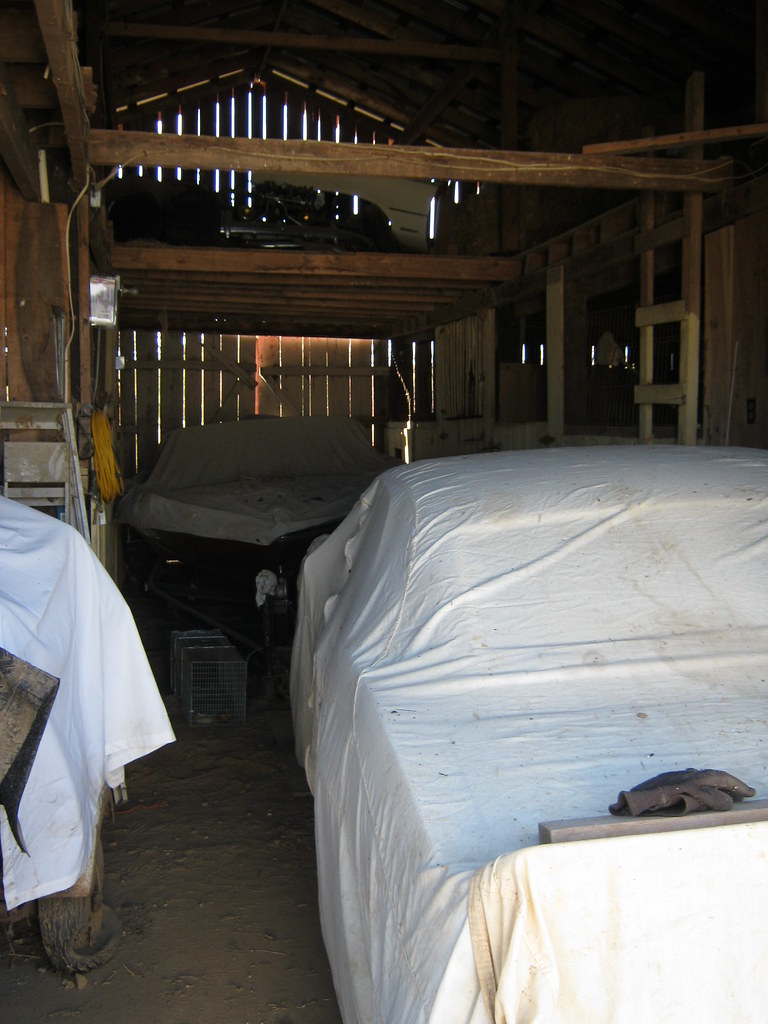When I dropped the parts off at the bodyshop, Adam, the guy that's going to do the work, said the hood was so bad he didn't really want to work with it. If you ran your hand flat against every panel you could feel waves in every surface. He said there would be more money in the hours it would take to fix it than it would ever be worth, and the stretched metal was so flimsy that you could never guarantee it would be straight, or stay straight once everything started shrinking. I put some feelers out on the internet to find a guy I had once contacted about some wagon parts. He had a '71 Safari, but didn't want to sell it as a whole car. Someone finally found him online and I called him. He's going to check the hood and if it looks solid I'll be going to look at it. The good thing is he's only about two hours away, possibly less.
I've been working on removing the woodgrain trim, woodgrain and the glue under it. It has been very time consuming and tedious. My fingers feel as though they're rubbed down to the bone.
Adhesive cleaner in a spray can and a shop rag.
The woodgrain peeled the clear coat off under the rear door handle. I don't suppose it will matter since this area will be stripped and repainted with faux-woodgrain.
If you own an old car, there's a high likely hood that you will acquire parts. If you work on old cars you will, without a doubt, begin to accrue old car parts. You won't necessarily make a conscious effort to do so, but they will eventually, over the years, just begin to follow you home and accumulate one way or another. Sometimes working on old cars doesn't just mean working on old cars, sometimes it means scrubbing glue off 15 miles worth of quarter panels. Sometimes it means climbing over cars and boats and huge spider webs to hoist heavy and cumbersome car parts in a barn loft for safe keeping. Try not to fall out of the barn loft.



